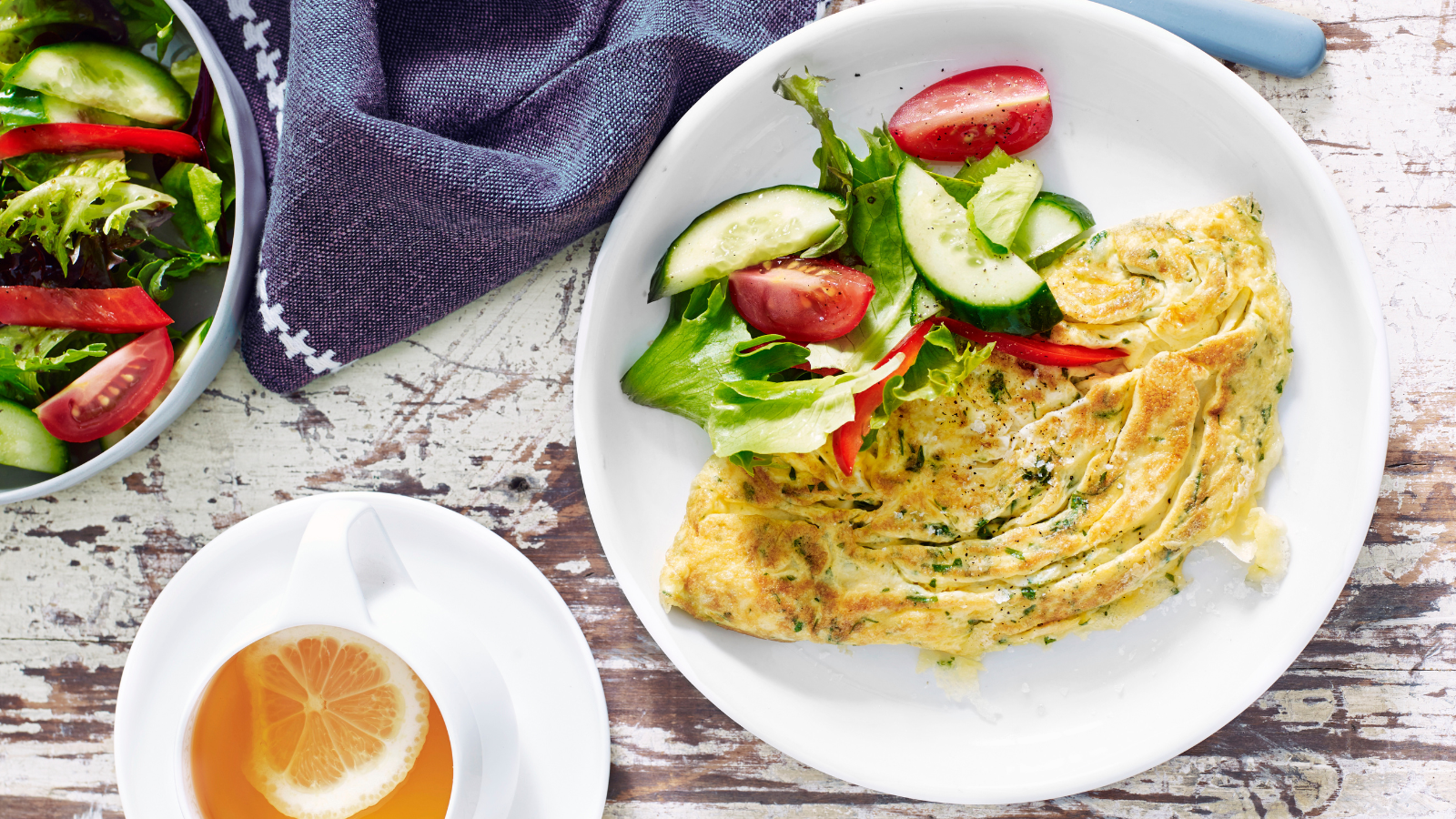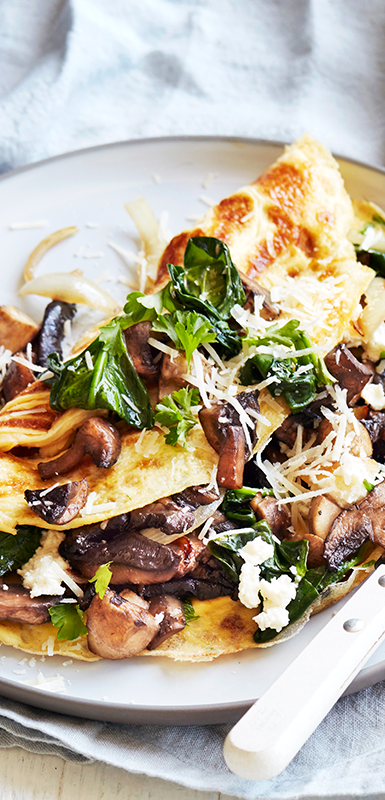How to cook an omelette


An omelette is a healthy, versatile and protein-rich dish that makes for a perfect meal any time of the day. Whether you're looking for a quick breakfast, a light lunch, or a hearty dinner, learning how to make an omelette can elevate your culinary skills and delight your taste buds. Packed with your favourite ingredients, from fresh vegetables to savoury meats, an omelette is both nutritious and satisfying. This guide will walk you through the steps to create a perfectly fluffy and delicious omelette every time.
Cheese and herb omelette
Prep time: 5 minutes | Cook time: 2 minutes
Serves: 1
Ingredients
2 eggs
2 tbs finely chopped fresh parsley
25g 50% reduced-fat grated tasty cheese
Step 1
Using a fork, whisk eggs, parsley and 1 tablespoon of water in a small bowl. Season with salt and pepper.

Step 2
Lightly spray a 20cm (top measurement) non-stick frying pan with oil and heat over medium-high heat. Pour in egg mixture and cook for 15 seconds or until it just starts to set around the edges. Using a spatula, gently draw the edges of the omelette into the centre, allowing uncooked egg to run underneath.

Step 3
Continue doing this until omelette is nearly set. Sprinkle the surface evenly with cheese. Using a spatula, fold the omelette in half. Cook for 30 seconds more or until cheese starts to melt. Slide onto a serving plate.

SERVING SUGGESTION: 2 cups salad ingredients drizzled with 1 teaspoon each olive oil and balsamic vinegar.

Top tips for making omelettes
1/ Temperature control: Use medium heat to cook your omelette. Too high heat can result in overcooked or burned eggs, while too low heat can make the omelette take too long to cook and become rubbery.
2/ Minimal mixing: When beating the eggs, don't overmix them. Aim for a uniform consistency, but avoid excessive beating, as this can incorporate too much air into the eggs, resulting in a puffy and less dense omelette. A gentle but thorough mixing is sufficient.
3/ Go green: Incorporate a variety of vegetables into your omelette for added nutrients and flavour. Spinach, capsicum, tomato, mushroom and red onion are all great options. Sauté them lightly before adding them.









